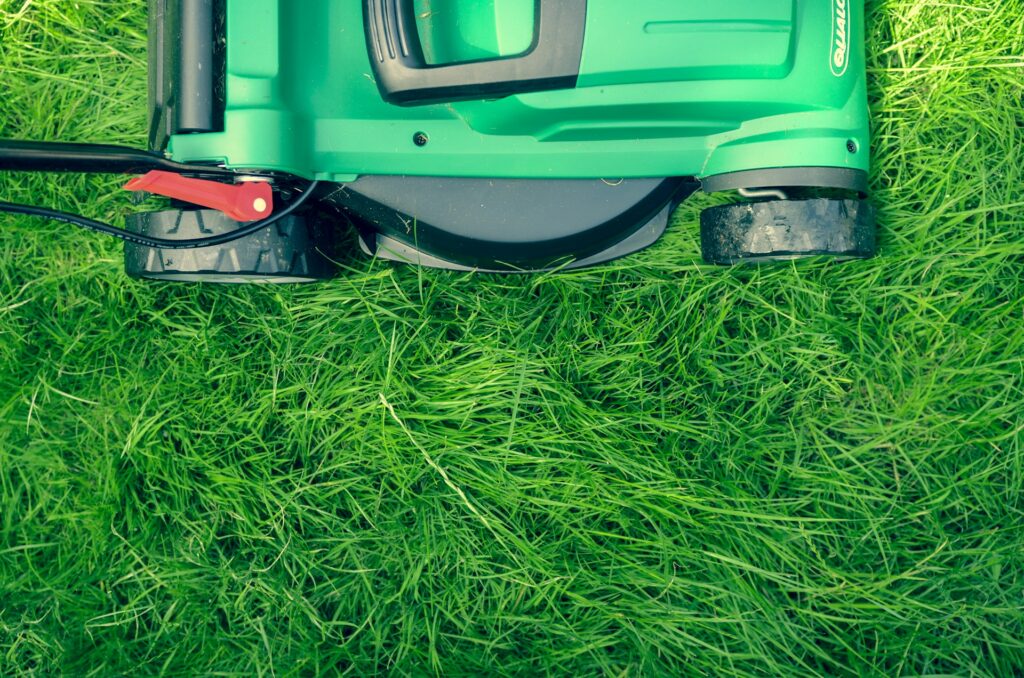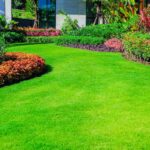Mowing a lawn is a fundamental aspect of lawn care that ensures your grass remains healthy, vibrant, and visually appealing. While it may seem like a straightforward task, proper mowing involves several key steps and techniques. This guide will walk you through the process, helping you achieve a pristine lawn.
Preparing Your Lawn and Equipment
Inspect Your Lawn:
Before you start mowing, inspect your lawn for any debris, such as sticks, rocks, or toys. Removing these items will prevent damage to your mower and ensure a smoother mowing process.
Check Your Mower:
Ensure your lawn mower is in good working condition. Check the oil level, fuel level (if using a gas mower), and the sharpness of the blades. Sharp blades are crucial as they cut the grass cleanly rather than tearing it, which can lead to a healthier lawn.
Setting Up Your Mower
Adjust the Mower Height:
Set your mower to the appropriate cutting height for your grass type. Generally, cool-season grasses (like Kentucky bluegrass and fescue) should be cut to a height of 2.5 to 3.5 inches, while warm-season grasses (like Bermuda and Zoysia) can be cut shorter, around 1 to 2 inches.
Mower Maintenance:
If you haven’t used your mower in a while, perform basic maintenance such as checking the spark plug, air filter, and ensuring all bolts are tight. Clean the mower deck to prevent clogs and improve performance.
Mowing Techniques
Mow in Different Directions:
To promote even growth and prevent soil compaction, vary your mowing pattern each time you mow. For example, if you mow north-south one week, mow east-west the next. This prevents the grass from leaning in one direction and helps you catch any missed spots.
Follow the One-Third Rule:
Never cut more than one-third of the grass blade length at a time. Cutting too much can stress the grass and lead to brown, unhealthy patches. If your lawn has grown too long, mow it in stages, gradually reducing the height over a few days.
Mulching vs. Bagging:
Consider using a mulching mower or a mulching attachment. Mulching finely chops the grass clippings and returns them to the lawn, providing essential nutrients. If you prefer a cleaner look or have a lot of weeds, you may opt to bag the clippings.
Post-Mowing Care
Clean Your Mower:
After mowing, clean the mower deck and blades to remove any grass buildup. This maintenance step ensures the mower remains efficient and extends its lifespan.
Watering and Fertilizing:
Water your lawn deeply but infrequently, aiming for about 1 inch of water per week. Avoid watering immediately after mowing to prevent fungal growth. Fertilize your lawn according to the specific needs of your grass type and the local climate.
Additional Tips for a Healthy Lawn
Edge and Trim:
Use a string trimmer or edger to tidy up the borders of your lawn. This adds a polished look and prevents grass from encroaching on walkways or flower beds.
Monitor for Pests and Diseases:
Regularly inspect your lawn for signs of pests, diseases, or nutrient deficiencies. Early detection allows for timely intervention, keeping your lawn healthy and lush.
Aeration:
Aerate your lawn once or twice a year to alleviate soil compaction and promote root growth. Aeration involves removing small plugs of soil, allowing air, water, and nutrients to penetrate deeper into the soil.
Mowing your lawn correctly is essential for maintaining its health and appearance. By preparing your lawn and equipment, using proper mowing techniques, and providing post-mowing care, you can ensure your lawn remains a source of pride and enjoyment. With consistent effort and attention to detail, you’ll achieve a beautiful, well-manicured lawn that enhances the overall appeal of your home.
Troubleshooting Common Mowing Problems
Even with the best intentions, you might encounter some common issues while mowing your lawn. Here’s how to address them:
Uneven Cut:
If your lawn looks uneven after mowing, check the mower deck to ensure it’s level. Also, inspect the blades to ensure they’re sharp and properly installed. Uneven terrain can also contribute to an uneven cut, so consider leveling out any bumps or dips in your lawn.
Scalping:
Scalping occurs when you cut the grass too short, exposing the soil and causing brown patches. This can happen if your mower blades are set too low or if the ground is uneven. Adjust the cutting height and ensure the mower deck is properly balanced to avoid scalping.
Clumps of Grass:
Grass clumps can form if you mow wet grass or if the grass is too long. To prevent this, mow when the grass is dry and follow the one-third rule to avoid cutting too much at once. If clumps do form, rake them up to prevent smothering the grass underneath.
Stragglers:
If you notice patches of uncut grass after mowing, it could be due to dull blades or mowing too quickly. Ensure your blades are sharp and mow at a steady pace, overlapping each pass slightly to catch all the grass.
Seasonal Mowing Adjustments
Different seasons require different mowing strategies to keep your lawn healthy:
Spring:
As the grass starts to grow in spring, begin mowing at a higher setting. Gradually lower the cutting height as the season progresses. This encourages strong root growth and prepares the grass for the hotter summer months.
Summer:
During the heat of summer, raise the mower height to provide shade for the soil and reduce water evaporation. Mow in the early morning or late evening to avoid the hottest part of the day, which can stress the grass.
Fall:
In the fall, continue mowing until the grass stops growing. Gradually lower the cutting height for the final few mowings to prevent snow mold and other winter diseases. Remove fallen leaves to prevent them from smothering the grass.
Winter:
In most regions, mowing isn’t necessary during winter. However, keep an eye on your lawn and remove any debris that could cause damage or disease. Store your mower properly to ensure it’s ready for use in the spring.
Environmental Considerations
Being environmentally conscious while maintaining your lawn can make a significant impact:
Reduce Chemical Use:
Minimize the use of chemical fertilizers and pesticides. Opt for organic or slow-release fertilizers, and implement integrated pest management practices to reduce reliance on chemicals.
Water Wisely:
Use water efficiently by watering deeply and infrequently. Consider installing a rain barrel to collect rainwater for your lawn. Avoid watering during the hottest part of the day to reduce evaporation.
Compost Clippings:
If you choose to bag your grass clippings, consider composting them. Grass clippings are rich in nitrogen and can be a valuable addition to your compost pile, providing nutrients for your garden.
Advanced Lawn Care Tips
For those looking to take their lawn care to the next level, consider these advanced tips:
Soil Testing:
Conduct a soil test to determine the pH and nutrient levels of your soil. This information can help you tailor your fertilization and lime applications to meet the specific needs of your lawn.
Overseeding:
Overseeding involves spreading grass seed over your existing lawn to fill in thin areas and improve the lawn’s overall density. Choose a grass seed that matches your existing lawn type for the best results.
Topdressing:
Topdressing involves applying a thin layer of compost or soil over your lawn. This practice can improve soil structure, provide nutrients, and help level out minor depressions in the lawn.
Using Lawn Enhancements:
Consider using products like lawn rollers or dethatchers to improve the quality of your lawn. Lawn rollers can help level out minor bumps, while dethatchers remove excess thatch, promoting better air and water movement in the soil.
Mowing a lawn is more than just a routine task; it’s an essential part of maintaining a healthy and beautiful outdoor space. By following these detailed steps and incorporating good lawn care practices, you can achieve a lush, green lawn that enhances the aesthetic appeal of your home and provides a welcoming environment for outdoor activities. Whether you’re a novice or an experienced gardener, the effort you put into mowing and caring for your lawn will pay off in the form of a vibrant, thriving landscape.






